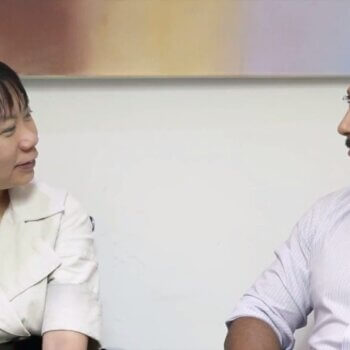Marion (Gen X):
As a trainer on the topic of the multi-generational workforce, I was always confident that I was 100% accurate about how to recruit and motivate younger generational staff. My own staff only left me only when I wanted them to; usually when I knew they should be in another position or another type of work setting.
My own recruitment process was intense but fast, to avoid the mismatches so many other managers complain about. I selected potential staff from among the interns in my community project. So I was able to watch them and see which ones had the heart and passion for my work and were willing to go the extra mile. I never needed to fire anyone – the ones who didn’t fit, quit within a month while still on probation.
Hence, no extra HR paperwork until I knew they were a right fit (many other companies, especially those which had professions or jobs under union representation, would tell me how hard it was to fire unionized staff even if they were underperforming.)
So I hired the right-hearted people. They were matched for my company’s cultural beliefs about helping others as psychologists and coaches.
Then why did my own recruitment, and eventually team dynamics, go haywire in 2013?
I am coming clean – I did not listen to my own advice! The advice was to hire the right heart, the right skill set, the right intelligence and know-how for that particular position.
For example, if you want an accountant, you hire the one with the best grades (if grades are the best measurement of know-how), the right heart who matches your culture best in terms of values and beliefs and the right skills you need (such as a certain field of accounting and a certain number of years of experience).
I hired the right-hearted people knowing full well they did not have the right skill set and know-how for that particular position. And then, like most managers, I hoped and prayed: if they want it bad enough, they will learn and change and grow. All I needed to do was to repeat the lesson over and over, and one day they would wake up and KNOW. It would happen. It would just take time.
I am a firm believer that everyone has 100% full potential. So I gave my staff respect, but with an underlying expectation that they could change any behaviour any time. All they needed to do was decide they wanted to. A good approach if I was a coach. But not so good for a manager who needed to get things done well and on time.
So I gave them work but ended up pushing them beyond their natural preferences. Using the DISC Personality Test categories, I will explain what I mean.
I gave one of my new staff – a high Steadiness (S) and Influencing (I) person – a team to lead. She could not tell them what to do, she did it all herself. She didn’t want to make anyone sad – she was too polite to do so. But nothing was done.
I wanted her to think for herself. However, she displayed HIGH Steadiness (S). She desired steady structures and a checklist and when she did not get it, she was stuck. Her personality and conditioning worked against what I wanted and needed.
Could she change? Yes. Remember we all can change anytime, if we really want to. However what if your employee (like mine), did not really want to? How long do you wait? When do you admit a mistake? A mistake that disrupted daily activity as she was resistant on a daily basis. I wanted a project done fast as a Dominating, Entrepreneur and Task-Orientated person, but I had hired a team leader whose habits were against being fast, against telling people what to do, against being task-orientated, and often giving in to people’s preferences.
I hired another staff who had no Compliance/Conscientiousness (C). Seriously, she had none! I tasked her to maintain a system already in place. When one has no compliance, one cannot check details. So no matter how good the system, she could not implement it. She did not pay attention to dates, numbers and times. She did not see that various things in the system needed to be checked and double-checked. The project went haywire but she could not understand why.
The painful part is, both of them really had their heart in the right place. They were pro-company and had the vision to build a career in the company.
As for me, my mistake was in not realizing that they did not have the right skill sets and preferences. Could they learn that in the company? Yes they could, but the more important question was, did they want to? And do you as a manager have the energy, time and money to wait for them to do that? In my small set-up, the answer was no.
The difference now is that I have accepted that.
Moving forward, my internship process now has a behavioral aspect. I watch for the specific skills I want. I ask them to do a DISC profiling and in interviews I listen carefully to what they say they will or will not do. If they are not a good match, I say good-bye faster. It is better for both of us. The earlier they know what they can do, the faster they will go towards the work that best matches them.
What would I recommend for my two ex-staff?
The staff with high Steadiness (S) and Influence (I) will make a wonderful counselor and youth worker. She needs to work with people who need healing and someone to be present with them.
As for the staff with the low Compliance (C), she needs a company where her work will be counter-checked and she will be part of a team.
‘Sorry, I broke my employee’ is not a cautionary tale. It is a tale of forgiving myself for choosing the right-hearted but not right-skilled. And, it is still one level up from choosing the right-skilled but wrong-hearted.
Do I still care deeply for my former staff and regard them highly? Yes. After all, they are good people.
It may happen again. We may all regularly break our employees. But that is our role in their learning. Will such employees thank us for making them do things they did not want to do? Probably not. However, they will learn and ask themselves: “Do I want to change my own behavior for the job?” and the deeper question: “What will I give up to get a job done and what will I not?”
With that self-awareness, it is my hope that they will find a better job fit.
As for us as multi-generational managers, we will always have employees with varying degrees of heart, skills and know-how. Some will have to bend to get the job done and some will end up breaking. But when the time comes to break up, when the relationship is not good anymore – we have to know when to let go.
—————————–
This is an excerpt from a soon-to-be-published book “Turning Gen Y On: What Every Leader Needs to Know“, based on over 7 years of research on the subject of Managing Multi-Generational teams. Please visit our Publishizer Campaign at https://publishizer.com/are-you-ready-to-turn-gen-y-on/proposal/ for info.





























